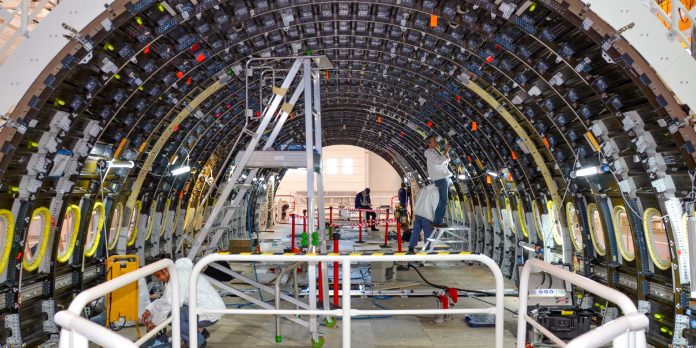For European aerospace company Airbus, the introduction of new digital tools into factory processes must be assured. New technology has to work straight away, and intuitively.
It should also deliver value. The process of connecting machines is not an end in itself, just a means to enter into a conversation about industrial intelligence.
Technology is not to be indulged, explains Sébastien Boria, R&D technology leader at Airbus, speaking at the opening of HPE’s new IoT innovation lab in Geneva.
Case in point: Airbus is interested in ‘wearables’ for factory workers, and has experimented variously with smart glasses, but its proofs have come to nothing, and it will not foist technology on a tightly-run production line.
“We want something, a product, which will be there, and give the right user experience – and we’re working with all the glasses on the market. But we haven’t implemented anything,” explains Boria.
“We can’t deploy them because they’re not very cost effective, and they’re too heavy – no one wants to be eight hours a day with this equipment on their eyes. Either their eyes aren’t ready, or the wearables aren’t ready.”
Which brings us back to the start, to Airbus’ lessons for Industry 4.0. Boria’s task, as the company’s tech lead, is to plough the middle ground between the ‘operational technology’ (OT) and information technology (IT), so new technologies flourish for both sides, and the new harvest is good.
3 | Bring out the best of the IT / OT worlds
It’s a dirty job, but someone has to do it. “I always hear about IT and OT convergence,” he tells a crowd at the HPE event in Geneva, making an affectionate sketch of the industry.
“Unfortunately, there are three worlds here: the IT guys, who don’t respect the OT guys; the OT guys, who don’t want anything to say to the IT guys; and then the poor guys like me in the middle, trying to arrange that convergence.”
He continues: “We need to keep the best of both those worlds – so OT does the job to fulfil the process, and IT acknowledges that OT exists.”
It is a neat balancing act, he says, between the two fiercely tribal institution, with different expertise and priorities, forced together for digital transformation. Get them together to discuss the idea of ‘real time’, and watch the sparks fly, he says. At the coal face, milliseconds count.
“If you want to have a very big discussion, put a control engineer and an IT guy in the same room, and and get them to speak about ‘real time’.”
4 | Take ownership of your data, and destiny
Finally, Airbus advises that every institution and enterprise retains charge of its own data. It is the only way, when the enabling technology is so fleeting and the regulatory environment is so immature, to be master of your own destiny.
“If we create the data, we are owner of it,” says Boria. “If we speak about digitalisation, we are fighting in my time especially against editors that want to capture the data, and not to let it free.” It is also hard to rely on third party security, he suggests,
The alternative does not bear thinking about. “Losing ownership of the data is a problem because [it means] we have to go back to the beginning, which is not affordable, if we want to go to a different solution or industrial system.”
A new report and webinar on edge computing in industrial IoT setups, called AI and IoT at the cutting edge – when to move intelligence closer to the action, is available; go here for the report, go here for the webinar.

